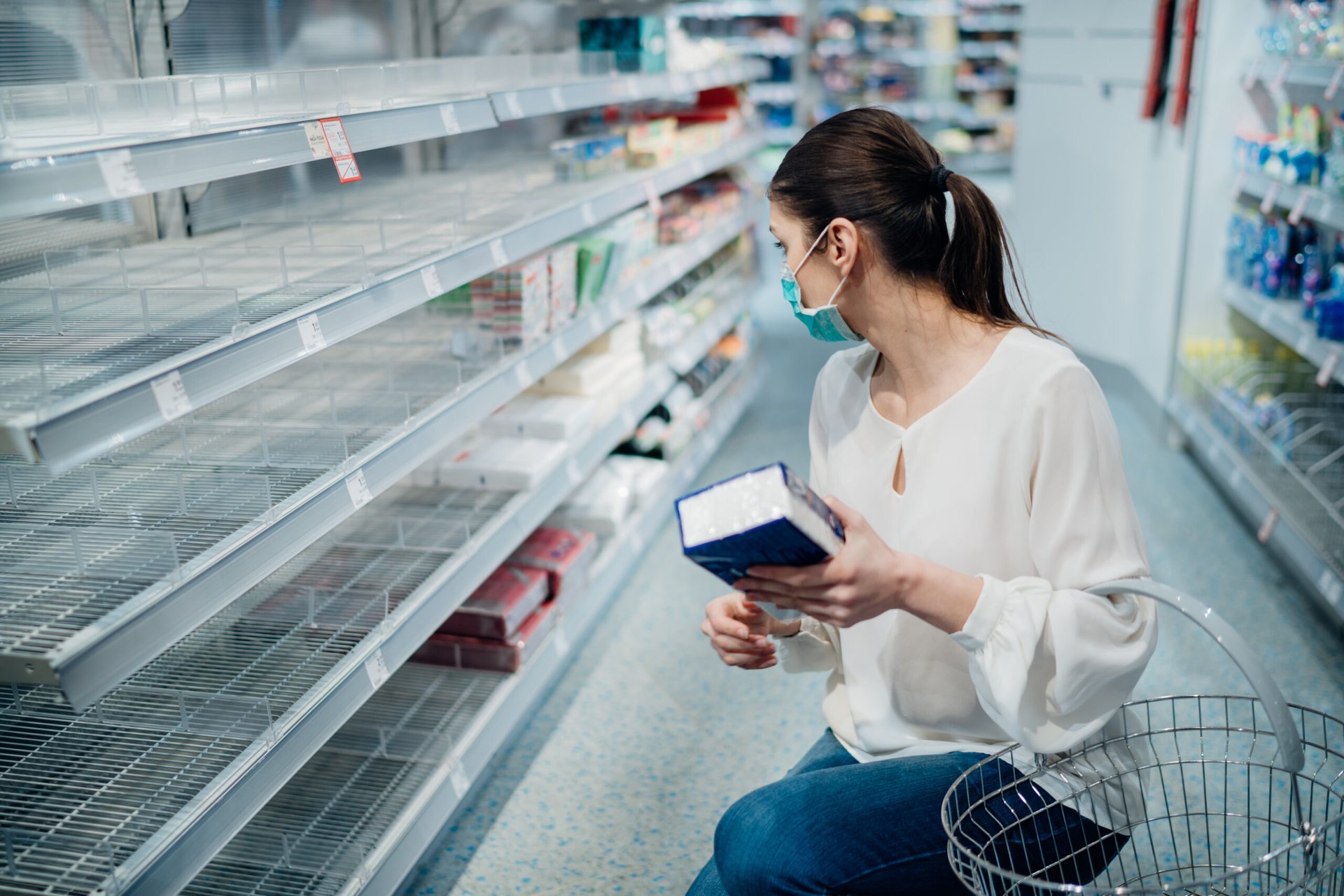
Editor's Note: This story originally appeared on Surviving and Thriving.
Recent flooding in British Columbia led to a double-barreled consumer emergency: Stores emptied rapidly of food and household items, and because both road and rail links were so badly damaged, deliveries halted.
Shades of the early days of the pandemic: Once again, we’re seeing the fragility of the modern retail supply system.
It’s essential that we learn from this. Specifically: Don’t wait until an emergency threatens. Instead, build a good stockpile of food and other vital items in advance.
Understand: I am not advocating hoarding. The Canadian government was pleading with folks in B.C. not to panic-buy, which would leave nothing for others. (That worked well.) Instead, I am talking about a simple, targeted approach to not just get these items, but use and replace them regularly.
This isn’t only about food, either. Do you tend to wait until the last minute to buy cat litter? Ever found yourself purchasing tampons at a convenience store at 11 p.m.?
What about the allergy meds that keep your eyes from swelling shut every spring, or the lotion that makes your psoriasis flare-ups a little less painful? Suppose you were running low but kept procrastinating – and then an emergency made it impossible to get more.
Fortunately, there’s a bonehead-simple solution. Just three basic tactics can help keep you from running out of food, pet supplies, OTC meds or, yeah, toilet paper.
Step 1: Do an emergency inventory
Figure out what you use a lot of or can’t afford to be without. Then figure out how much of this stuff you already have.
You’ll want a good store of food, obviously (including some things that you can prepare easily and/or without power) along with bottled water, paper products, OTC medications, toiletries and cleaning supplies.
If you have pets, include enough water for them as well as their food and other useful items (e.g., the fish-oil capsules for Fido’s joint issues).
Do you use milk even occasionally in your cooking? Get yourself a box of powdered moo for those oatmeal breakfasts and mac and cheese dinners.
Of course, you’ll need the usual emergency supplies, such as batteries and candles – and make sure you can lay hands on a manual can opener.
Step 2: Make a list
Once the inventory is finished, write down whatever you don’t have enough of and buy those things right away. Those with access to warehouse clubs can purchase large quantities of items at prices that are often (but not always) lower.
If you can’t afford to stock up all at once, set a goal to get one or two extra things per shopping trip: a couple of cans of soup, a pound of pasta, a box of cat litter, some tampons.
See “12 ways to save money on groceries” for tips on stretching available shopping dollars. (Hint: Some of these tactics might even yield free food and/or household items.)
Step 3: Stay on top of emergency prep
One big stock-up isn’t enough. You also have to:
Use this stuff. A couple dozen packs of ramen sitting in your pantry/basement will eventually turn rancid. A case of beets you picked up cheaply won’t do you much good if this root vegetable isn’t popular at your house. Buy the food people like to eat, and then eat it, starting with the oldest pack of ramen. Which means, of course, that you’ll need to …
Plan a re-inventory. Set specific days to check on your supplies. That could be the last day of every month if your household goes through a lot of stuff, or every other federal holiday if you’re a minimalist bunch. Make it every solstice and every equinox and you’re assured of four inventories a year. Pick what works for you and set a reminder on your calendar. Once you’ve re-inventoried, you must …
Schedule a re-stock. No sense buying and using stuff without replacing it. Decide your personal comfort level, such as “Re-supply once we’ve eaten half our stuff” or “Inventory and shop for toiletries every two months.” You could also buy any time you find great deals, and put the items in the back of your stash. (Pro tip: Write the sell-by date on the front of a box or can, not the top.)
The bottom line
Not many people want to believe they, too, might face a food emergency. Surely the stores will always be stocked. I mean, they always have, so they always will, right?
Sounds kind of dumb when you say that out loud, doesn’t it? But this is how a lot of us operate.
When a blizzard or hurricane is predicted, stores quickly run out of milk and bread, and often just about everything else. It’s human nature: People wait until life gets dire, then rush to buy as much as they can.
Don’t be that person. Loading up means less for everyone else.
You might become part of the problem in other ways, too, such as contributing to traffic jams or straining an already stressed first-responder system. (There’s a reason that the authorities ask for people to stay home during emergencies.)
Besides, there are no guarantees. Imagine waiting in line with hundreds of other folks, fearful and anxious – and then going home empty-handed.
Now imagine having to tell your household, “Looks like we’re sharing a pack of ramen and a can of beets for dinner.”
More from Surviving and Thriving:






Add a Comment
Our Policy: We welcome relevant and respectful comments in order to foster healthy and informative discussions. All other comments may be removed. Comments with links are automatically held for moderation.